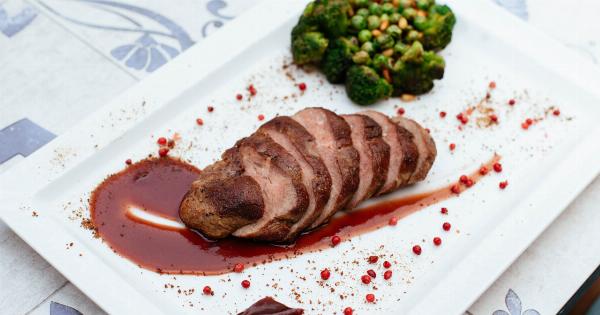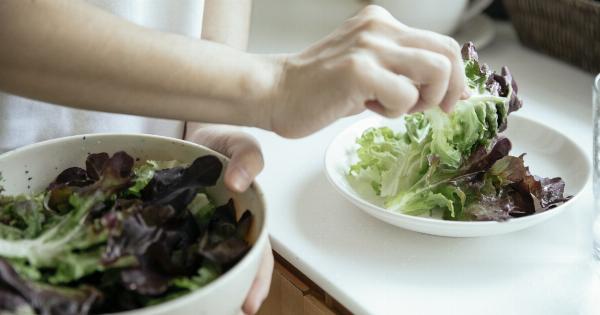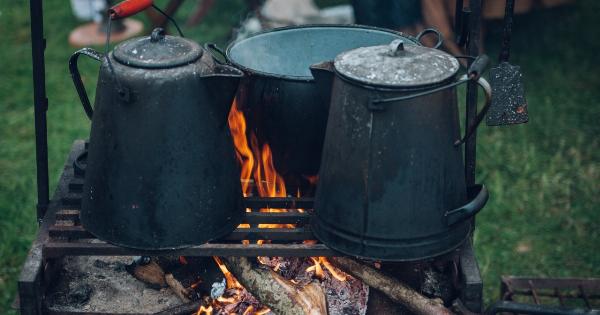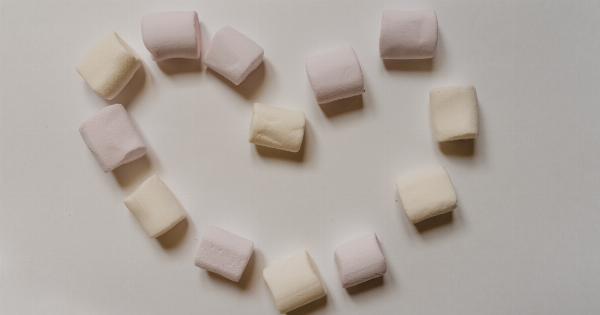Iron is an essential nutrient that plays a crucial role in maintaining overall health. It is required for the production of hemoglobin- a component of red blood cells that carries oxygen from the lungs to other parts of the body.
Iron also supports immune function, cognitive development, and body temperature regulation. However, Iron deficiency is a common health problem that can lead to fatigue, weakness, and anemia. Therefore, it is essential to consume iron-rich foods to prevent deficiency and maintain good health.
Types of Iron
Iron is of two types: Heme iron and Non-heme iron, and the absorption rate and source of these iron types are different.
Heme Iron
Heme iron is found in animal-based foods, including meat, fish, and poultry. It is more absorbable and contributes to a significant part of total iron in the body.
Non-heme Iron
Non-heme iron is found in plant-based foods, including grains, legumes, and leafy greens. It is less absorbable than heme iron, and the absorption rate can be improved by consuming them with vitamin C-rich foods.
30 Iron-Rich Foods to Boost Your Health
1. Red Meat
Red meat is a great source of heme iron, and it includes beef, pork, and lamb. A 3-ounce serving of cooked beef contains 2.7 mg of heme iron. However, it is recommended to limit its consumption due to its high saturated fat content.
2. Poultry
Chicken and turkey are also good sources of heme iron. A 3-ounce serving of cooked chicken or turkey contains 1.1 and 1.5 mg of iron, respectively.
3. Seafood
Seafood, including fish and shellfish, is also a rich source of iron. A 3-ounce serving of cooked salmon contains 0.7 mg of iron, and a 3-ounce serving of cooked clams contains 23.8 mg of iron.
4. Liver
Liver is an excellent source of heme iron and other essential nutrients. A 3-ounce serving of beef liver contains 5.8 mg of iron.
5. Spinach
Spinach is a non-heme iron source that is packed with essential vitamins and minerals. A 1-cup serving of cooked spinach contains 6.4 mg of iron.
6. Kale
Kale is another non-heme iron source that is also rich in vitamin C. A 1-cup serving of cooked kale contains 1.2 mg of iron.
7. Broccoli
Broccoli is a great source of non-heme iron and vitamin C. A 1-cup serving of cooked broccoli contains 1 mg of iron.
8. Lentils
Lentils are a non-heme iron source that is also rich in fiber and protein. A 1-cup serving of cooked lentils contains 6.6 mg of iron.
9. Beans
Beans are a versatile non-heme iron source that can be used in various dishes, including soups and salads. A 1-cup serving of cooked kidney beans contains 3.9 mg of iron.
10. Chickpeas
Chickpeas, also known as garbanzo beans, are a non-heme iron source that is also rich in protein and fiber. A 1-cup serving of cooked chickpeas contains 4.7 mg of iron.
11. Tofu
Tofu, a soy-based food, is a non-heme iron source that is also an excellent source of protein. A 1/2 cup serving of tofu contains 3.4 mg of iron.
12. Quinoa
Quinoa is a gluten-free grain that is a non-heme iron source and also contains all essential amino acids. A 1-cup serving of cooked quinoa contains 2.8 mg of iron.
13. Oats
Oats are a non-heme iron source that is also rich in fiber. A 1-cup serving of cooked oats contains 3.4 mg of iron.
14. Nuts
Nuts, including almonds, cashews, and pistachios, are non-heme iron sources and also rich in healthy fats. A 1/4 cup serving of almonds contains 1.4 mg of iron.
15. Seeds
Seeds, including pumpkin and sesame seeds, are non-heme iron sources and also rich in healthy fats. A 1/4 cup serving of pumpkin seeds contains 2.8 mg of iron.
16. Prunes
Prunes are a non-heme iron source and also a good source of fiber. A 1/2 cup serving of prunes contains 1.6 mg of iron.
17. Raisins
Raisins are a non-heme iron source and also a rich source of potassium. A 1/2 cup serving of raisins contains 2.1 mg of iron.
18. Fortified Cereals
Fortified cereals are non-heme iron sources that also contain essential vitamins and minerals. A 3/4 cup serving of fortified corn flakes contains 18 mg of iron.
19. Fortified Oatmeal
Fortified oatmeal is a non-heme iron source that also contains essential vitamins and minerals. A 1-cup serving of fortified oatmeal contains 4 mg of iron.
20. Fortified Milk
Fortified milk is a non-heme iron source and also an excellent source of calcium and vitamin D. A 1-cup serving of fortified whole milk contains 1.02 mg of iron.
21. Beef Jerky
Beef Jerky is a portable and convenient source of heme iron. A 1-ounce serving of beef jerky contains 1.88 mg of iron.
22. Tuna
Tuna is a heme iron source that is also a great source of omega-3 fatty acids. A 3-ounce serving of cooked skipjack tuna contains 1.1 mg of iron.
23. Chicken Liver
Chicken liver is a heme iron source that is also a great source of vitamins A and B. A 3-ounce serving of cooked chicken liver contains 12.8 mg of iron.
24. Pork Tenderloin
Pork tenderloin is a heme iron source that is also lower in saturated fat than other red meats. A 3-ounce serving of cooked pork tenderloin contains 0.9 mg of iron.
25. Salmon
Salmon is a heme iron source that is also a great source of omega-3 fatty acids. A 3-ounce serving of cooked salmon contains 0.5 mg of iron.
26. Turkey Breast
Turkey breast is a heme iron source that is lower in calories and saturated fat than other red meats. A 3-ounce serving of cooked turkey breast contains 0.9 mg of iron.
27. Beef Liver
Beef liver is a heme iron source that is also a rich source of vitamins A and B. A 3-ounce serving of cooked beef liver contains 4.9 mg of iron.
28. Clams
Clams are a heme iron source that is also a great source of vitamin B12. A 3-ounce serving of cooked clams contains 23.8 mg of iron.
29. Mussels
Mussels are a heme iron source that is also a great source of omega-3 fatty acids. A 3-ounce serving of cooked mussels contains 4.4 mg of iron.
30. Oysters
Oysters are a heme iron source that is also a great source of zinc. A 3-ounce serving of cooked oysters contains 7.8 mg of iron.
The Bottom Line
Iron is an essential nutrient that is required for maintaining overall health. Consuming iron-rich foods, including both heme and non-heme sources, can help prevent deficiency and maintain good health.
For optimal absorption, non-heme iron sources should be consumed with vitamin C-rich foods. Consult a healthcare professional to determine the right amount of iron for your body.






























